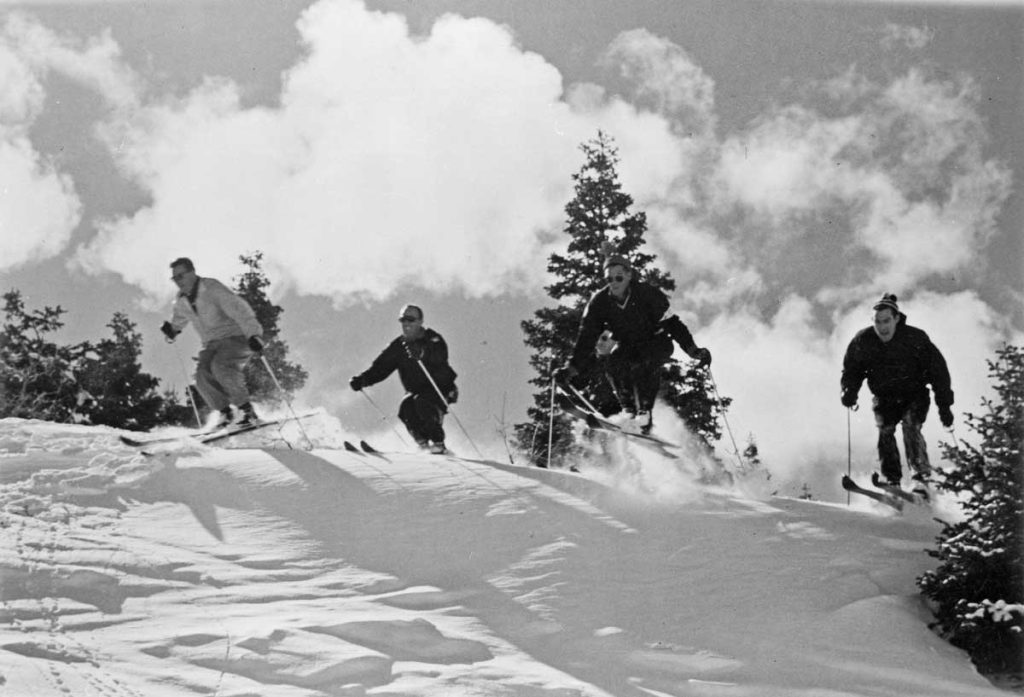The descriptions are nearly as plentiful as the snowflakes: “The White Room,” “Cold Smoke,” “Champagne Powder,” and many more. But above all, what falls on Utah winter resorts is universally described by their promoters as “The Greatest Snow on Earth.” ® It is on Utah license plates, national and international advertising, and even preserved for all time as a legal decision upheld by the Supreme Court of the United States.
Although snowfall got off to a slow start this ski season, “The Greatest Snow on Earth” is finally falling in measurable quantities across Utah ski slopes. But is the slogan all hype, fact, or a little bit of both? It does snow a lot in the Wasatch Mountains. That’s a fact, backed up by decades of weather data that shows Park City Mountain averages 365 inches up top while Deer Valley counts about 300 at its peak elevations. Over in Little Cottonwood Canyon, Alta recorded a whopping 903 inches just three seasons ago.
Its not just the quantity that makes Utah snow “great.” It’s also its lower density – lightness that results in face shots and the white cloud that rises all around and behind you as you giggle your way downhill on a powder day.

Credit: Park City Historical Society & Museum, Mel Fletcher Collection
“Utah storms generally originate in the North Pacific Ocean,” the late meteorologist Bill Alder explained to me once. He would know, as the long-time meteorologist in charge of the National Weather Service in Salt Lake, where the building now bears his name. “Cold Arctic air meets warmer Pacific waters and you’ve got the start of a Wasatch snow storm.”
Moisture heavy clouds roll across the Nevada and Utah deserts unimpeded by high mountain ranges, pick up more moisture over the Great Salt Lake, and then slam into the 11,000-foot peaks of the Wasatch. That pushes the clouds higher into colder air, the moisture condenses, and the snow begins to fall.
Then what’s nicknamed the “Goldilocks Effect” takes over. What falls first is generally denser, moister snow, which fills up the bumps and gullies that form between storms. Then as the rising air gets colder the moisture dries out and snow falls lighter. Another function of these storms is that more snow falls on the windward (west) side of the mountains in Big and Little Cottonwood Canyons than on the leeward side where Park City lies. Still, the Park City totals generally exceed annual snowfalls at almost all other Rocky Mountain resorts. The scientific term for the phenomenon of storms pushed higher by the mountains is called the orographic rise or lift. Powder skiers here just call it Nirvana.
The phrase “The Greatest Snow on Earth”® came from a column by Salt Lake Tribune ski columnist Tom Korologos in the late 1950s. The Ringling Brothers and Barnum and Bailey Circus was in town, so its phrase “Greatest Show on Earth” was top of mind as he wrote his column. Korologos moved to the Utah Travel Council and brought the phrase with him, using it in State of Utah winter tourism marketing campaigns. As the phrase got more exposure, the circus first complained to Utah’s governor and later went to federal court, claiming copyright infringement.
At a federal court trial in Washington D.C., lawyers for the circus claimed “dilution,” a narrow legal term referring to the confusion caused when a phrase mimics another phrase that is copyrighted. In mid-trial, the judge who was to decide the case asked the state’s attorney if Stein Eriksen still skied in Utah, which the attorney, Ralph Finlayson, happily confirmed. The judge said “If he’s still skiing—isn’t that amazing! Maybe even I could.” Needless to say, at that point the case tilted Utah’s direction!
The circus appealed the verdict all the way to the U.S. Supreme Court, which allowed the trial judge’s decision to stand. So you could say no less than the highest court in the land agrees that Utah has the Greatest Snow on Earth.®
The Park City Museum is hosting a lecture titled “Secrets of the Greatest Snow on Earth” given by Jim Steenburgh, a professor of Atmospheric Sciences at the University of Utah, on Wednesday, January 8 from 5-6 p.m. at the Museum’s Education and Collections Center located at 2079 Sidewinder Drive. And Happy New Year from all of us at the Park City Museum!